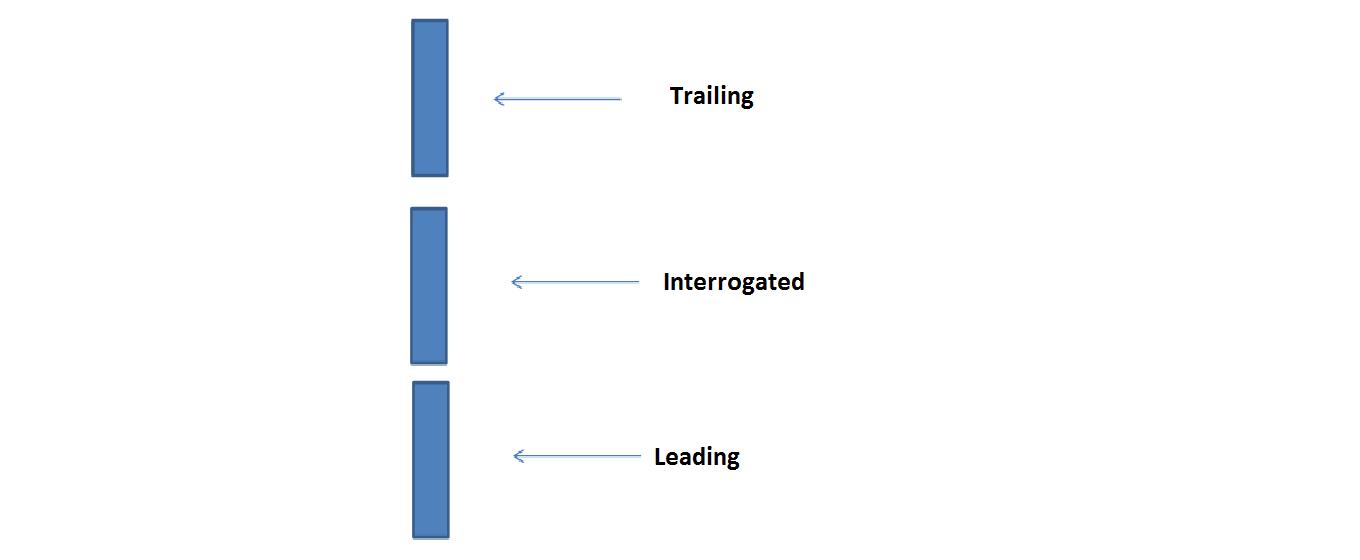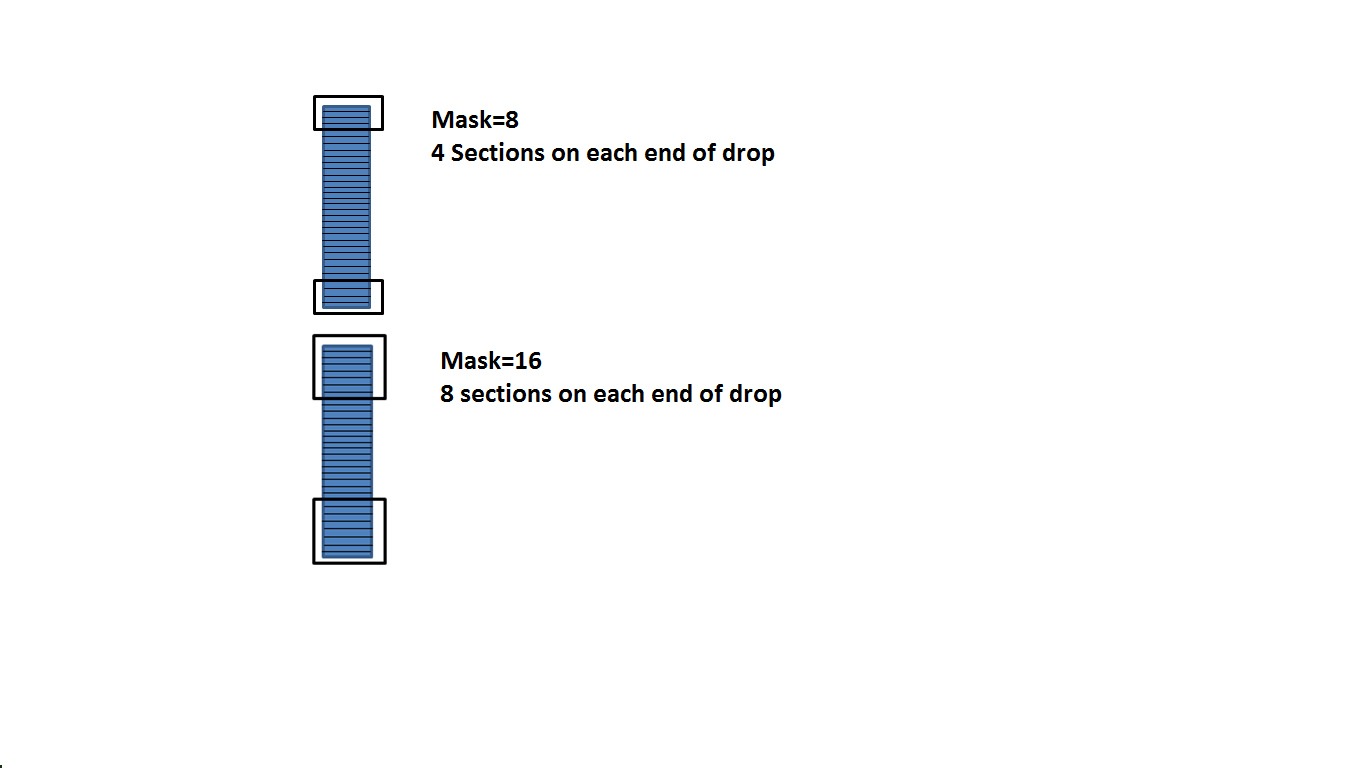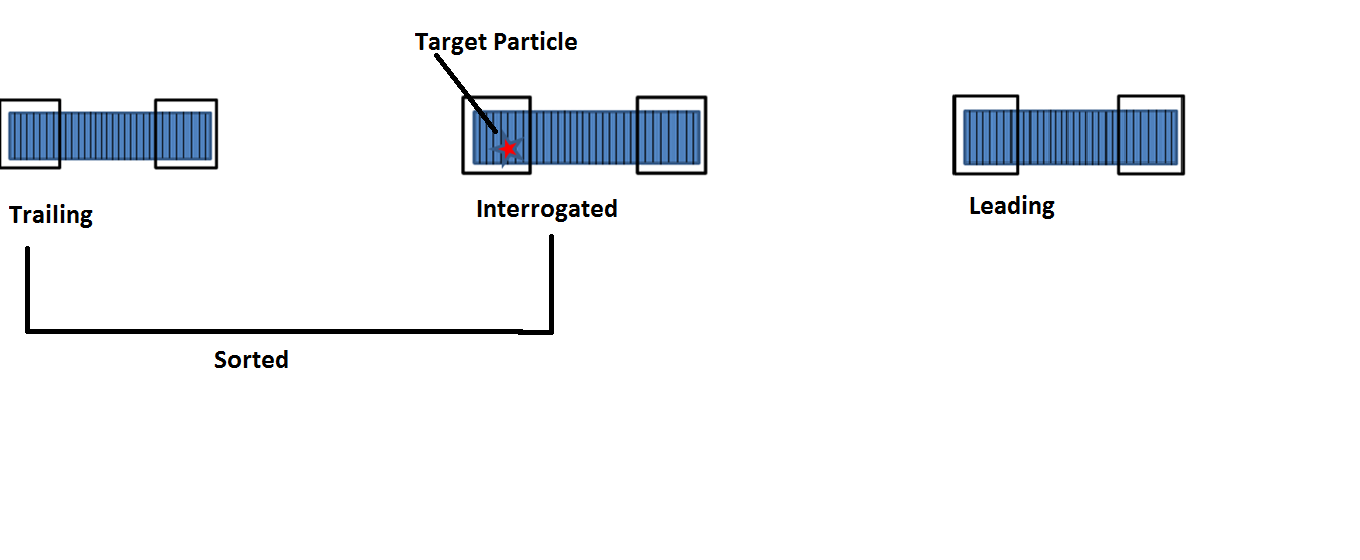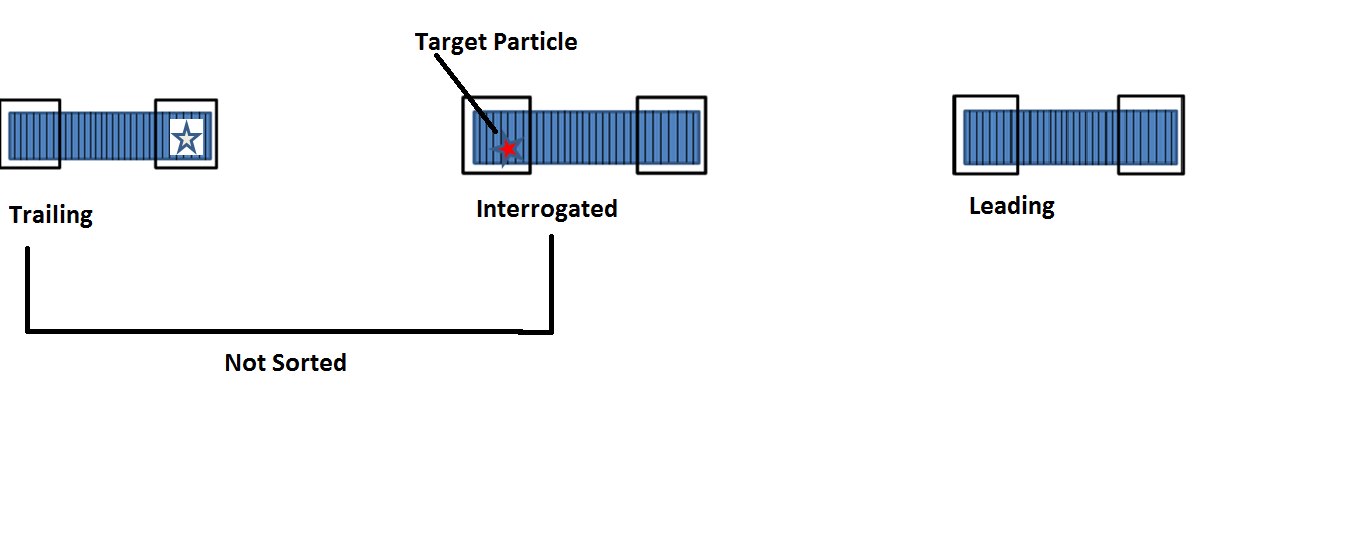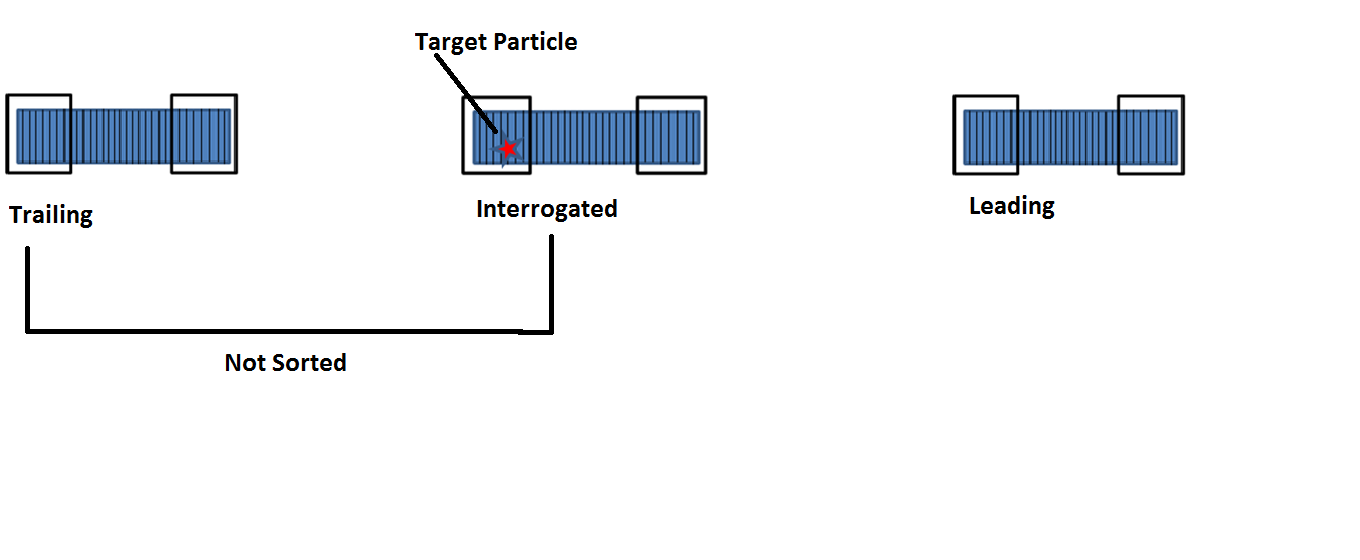The sort purity determines how many drops (and, as a result, how many target events) will be sorted into your collection device(s). Your sample enters the flow cell in a stream but leaves in drops. The instrument considers three drops: The leading drop, which has already been interrogated by (in the beam of) the laser(s), the interrogated drop, which is currently being interrogated, and the trailing drop, which has yet to be interrogated.
A mask is a region of the stream which is monitored for the presence of cells of interest (defined by BD Biosciences FACSAria Training Manual). Masks divide cells into 32 equal segments, and choosing different types of available masks determines how drops will be deflected if a sorting conflict occurs (BD Biosciences FACSAria Training Manual).
For example:
The various sort precision modes that are available to choose include three types of masks in combination: yield, purity, and phase.
Yield Mask
If a target particle falls within the user-defined yield mask, the interrogated drop and the drop adjacent to the target particle will be sorted (BD FACSAria Training Manual). For example, if a yield mask=16 is chosen (meaning 8/32 segments will be selected on each side of the drop) and the target particle falls inside the yield mask, both the interrogated drop and the drop adjacent to the target particle will be sorted (see below).
There are two interesting and useful cases of the yield mask. One case is yield mask=32. This means that 2 drops will always be sorted. This can be useful when you want to retrieve a high number of target particles. Another interesting case is yield mask=0. This means that one drop with always be sorted.
Purity Mask
The purity mask differs from the yield mask in that it looks at the leading/trailing drops as well as the interrogated drop before making a sort determination. If a target particle is in the interrogated drop and a non-target particle is within user-determined purity mask, the interrogated drop will not be sorted. This is useful if you want to reduce the number of non-target particles in your sorted samples.
Consider the case below, where the purity mask=16:
Because the purity mask=16 and the non-target particle falls within the purity mask on the trailing drop, the interrogated drop is not sorted even though it contains a target particle. However, (as an example) if the purity mask had been 8, the particle would have been sorted (barring bad graphics…). As stated previously, the purity mask can reduce the number of non-target cells that end up in your sorted populations. However, it does so at the expense of target cells being wasted.
Phase Mask
The phase mask may at first seem counter-intuitive. If a target particle is within the phase mask, the interrogated drop will not be sorted. Yes, you read that correctly. Take a look at the example below:
The phase mask=16, and target particle falls within the phase mask; therefore the interrogated drop is not sorted. Why would you want to do this? In order to understand why this might be useful, it is necessary that when the sample is interrogated by the instrument, it is still in a stream–there are not yet any droplets. The instrument calculates the rate of droplet formation and when it thinks the interrogated target particle will be in a droplet, and then sorts what it thinks is the appropriate particle. This is, of course, over-simplified, and sorting depends on many other factors. However, a phase mask can help you to minimize the chance of your target particle being “bumped” into the wrong drop (i.e., the trailing drop rather than the interrogated drop) by any inaccuracies that might exist.
Precision Modes
Precision modes combine the masks into usable modes that allow users to decide how stringent they want their sorting conditions to be. Here is a summary of the standard precision modes available on the Aria II:
| Precision Mode | ||||
| Purity | 4-Way Purity | Yield | Single Cell | |
| Yield Mask | 32 | 0 | 32 | 0 |
| Purity Mask | 32 | 32 | 0 | 32 |
| Phase Mask | 0 | 0 | 0 | 16 |
| Single Cell | / | / | / | X |
Purity Precision Mode means that if a non-target drop is 1/2 drop away, sorting of the drop containing a target particle will not occur. Purity is recommended for 2-way sorting.
4-Way Purity Precision Mode means that 1 drop only will be sorted. This is recommended for 4-way sorting.
Yield Precision Mode means that 2 drops will be sorted no matter what: the drop containing the target particle and the drop adjacent to it. This is recommended for enrichment or rare populations.Single Cell Precision Mode
means that if 2 target cells are in the interrogated drop, the drop will not be sorted. This is recommended for sorting onto a plate.
Additional Considerations
It is possible to make a custom configuration if you feel it is necessary. Contact the operator if you would like to do so or if you would like assistance in doing so.
When considering precision modes, remember that a yield mask and a phase mask cannot be used together (at least one has to be 0).
Also remember that when performing 4-way sorting or when sorting onto plates, there can be some contamination by non-target particles (mostly those meant for other collection vessels or wells). This can be reduced by using a yield mask=0 or a phase mask.
If you have any further questions or would like to discuss sort purity, please feel free to contact the operator.
